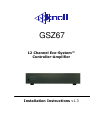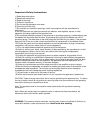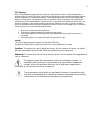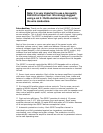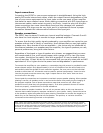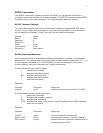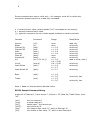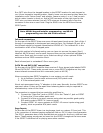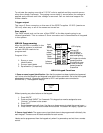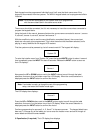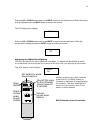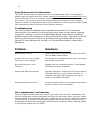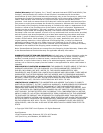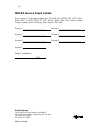
5
Individual bass, treble and balance adjustment. Each channel features
adjustments so installers can preset the room for speaker differences and
listener preferences.
External trigger. The GSZ67 can turn on and off source components with
its 12vdc trigger output.
All zone control. The MR164 keypad features all zone control of all off, all
zones to any one source (then set volume at 1/3) and all zones volume up or
down.
GSZ67 includes a quiet thermostat controlled internal fan to increase its
long-term power output capability.
Infrared controller ports. Each zone or room has its own infrared output
jack. An all zone jack is also provided.
Zones 5 and 6 have controlled line level outputs so larger power
amplifiers can be connected to these outputs.
Optional rack mount version. Occupies two rack spaces.
Unpacking:
The carton and packing materials used in shipping your new amplifier
were specially designed to protect it from the shock and vibration of shipping. We
suggest that you save the carton and packing materials to use if you move, or if the
unit ever needs to be shipped back to us for any reason. Should you discover that
your amplifier has been damaged during shipping, please contact your dealer or
Knoll immediately and request the name of the carrier so a written claim can be
made.
The right to a claim against a public carrier can be forfeited if the
carrier is not notified immediately in writing and if the shipping
carton and packing materials are not available for inspection by the
carrier. Save all packing materials until the claim is settled.
GSZ67 placement
During normal home operation the amplifier will become warm. However, there are
instances during high-level playback into low impedance speakers when the amplifier
will become much warmer than normal. To ensure the amplifier’s trouble-free
operation, it is necessary to provide adequate ventilation. Your amplifier should be
kept away from external sources of heat such as radiators and hot-air ducts. The
amplifier should never be placed with other heat-producing components in a cabinet
or enclosure lacking free airflow. Do not stack other components on top of your
amplifier.
Connecting your amplifier
When making connections between any source components and the amplifier, or
when making connections to any speaker, be certain that both the input devices and
the amplifier are turned off. Unplug all equipment before making any connections so
that there will be no unwanted signal transients that can damage equipment or
speakers.



